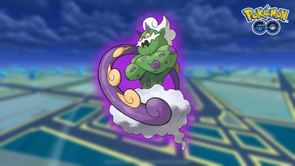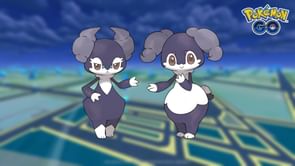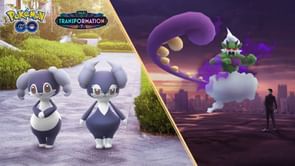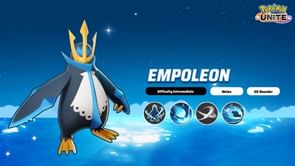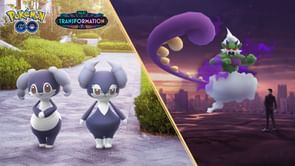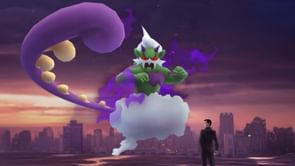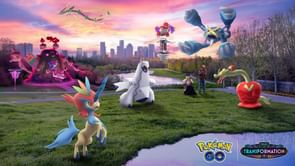Introduced in generation five, with the Pokemon Black and White games, Carracosta is a dual type water and rock Pokemon. It is the final evolution of its two stage evolution line and evolves from Tirtouga once it reaches the level threshold. Tirtouga is resurrected from the Cover Fossil. Carracosta is classified by the Pokedex as the “Prototurtle Pokemon” which is likely a reference to its general design. This guide will showcase Carracosta’s capabilities in battle, its appearances in the anime, as well as other general facts about Carracosta.
About Carracosta
As a generation five Pokemon, Carracosta first appeared in the Black and White season of the anime in the episode A Restoration Confrontation! Part 1. In this episode, multiple Carracosta were featured protecting a young Tirtouga from a flock of Archen. Carracosta will evolve from Tirtouga once it reaches level 37 and Tirtouga is resurrected from a Cover Fossil. The Pokedex mentions that Carracosta can open a hole in the bottom of a tanker from one slap.
| First appearance in anime | Pokemon the Series: Black and White A Restoration Confrontation! Part 1 |
| First appearance in game | Pokemon Black and White |
| Region | Unova |
| Evolution | Evolves from Tirtouga, not known to evolve into another Pokemon |
| 1st Evo level | 37 |
| 2nd Evo level | N/A |
| Pokedex Entry | They can live in the ocean and on land. A slap from one of them is enough to open a hole in the bottom of a tanker. |
Carracosta Base Stats
| HP | 74 |
| ATTACK | 108 |
| DEFENCE | 133 |
| SP. ATTACK | 83 |
| SP. DEFENCE | 65 |
| SPEED | 32 |
| TOTAL | 495 |
Appearance
Carracosta is a large blue and purple Pokemon that resembles an armored turtle. Most of its body is blue, but its armored shell and the area around its face is purple. Its face seems to be covered by a mask. It walks on two legs and has sharp claws at the end of both of its arms. There is a thick tail at Carracosta’s base and there are black appendages coming out of its feet. Carracosta is an average sized Pokemon at 3 feet and 11 inches, or 1.2 meters, tall.
Behavior
In the wild, Carracosta is common to find around oceans. They can be menacing to encounter in the water, and their claws are capable of ripping through armored boats with one slap. Carracosta are known to prey on Omanyte and Omastar. Since they are all fossil Pokemon that were resurrected, it is possible these Pokemon lived together before going extinct. The Pokedex mentions that Carracosta’s hardened shell is made from the bones and shells of the prey it devours.
Strengths and Weaknesses
Carracosta is a physical oriented Pokemon as its physical attack and defense are powerful, but it has a low speed and health stat. Because its statline is a mix of offensive and defensive, it can be difficult to find a role for Carracosta. It is much weaker versus special attacking Pokemon than physical attacking Pokemon. As a dual type water and rock Pokemon, Carracosta takes 2x damage from fighting, ground, and electric type moves. It also takes 4x damage from grass type moves. It is immune to no types but will resist normal, flying, poison, fire, and ice type moves.
Best Moveset
In competitive play, Carracosta is not rated highly on tier lists but can be utilized as an aggressive Pokemon that can easily get through defensive Pokemon. Its entire strategy focuses around Shell Smash and using it to quickly scale Carracosta’s stats. With the Solid Rock ability, it can survive even with sacrificing some of its defensive stats. Consider running Shell Smash, Stone Edge, Aqua Jet, and Hydro Pump/Ice Beam. This set is aimed at making Carracosta as aggressive as possible. Scale Carracosta’s stats with Shell Smash and use its higher stats to sweep your opponent’s Pokemon. The rest of its moveset is aimed to give you type coverage against your opponent’s team.
| Shell Smash | Stone Edge |
| Aqua Jet | Hydro Pump/Ice Beam |
How to Catch Carracosta in Pokemon Go?
If you would like to obtain a Carracosta in Pokemon Go, the easiest way to do so would be to first obtain a Tirtouga and eventually evolve it into a Carracosta. Like most fully evolved Pokemon, the base evolution spawns more commonly in the wild, which makes it easier to encounter. You can find Tirtouga spawning in the wild, at a boosted rate, near oceans, rivers, lakes, harbors, docks, canals, and other watery areas. Tirtouga can also be hatched from 5 and 7 km eggs but unfortunately, neither Tirtouga or Carracosta have appeared as raid bosses at Pokemon Gyms. To evolve a Tirtouga into a Carracosta, you will need 50 candies.
Trivia
- Carracosta and Tirtouga are the only fossil Pokemon to have rock as their secondary type instead of their primary type.
- The inspiration for Carracosta’s design is likely based on Archelon, the largest species of sea turtle.
- The name Carracosta is a combination of the words carapace and costa (Latin for coast).
FAQ
Is Carracosta a fossil?
Carracosta is a Pokemon that is resurrected from a fossil. Tirtouga can be resurrected from a Cover Fossil at the game’s respective research institute. Once the Cover Fossil is turned into a Tirtouga, it will evolve into Carracosta once it reaches level 37. It also bears a connection to other fossil Pokemon like Omanyte and Omastar.
What number is Carracosta?
Carracosta is the 565th Pokemon in the Pokedex. The Pokedex will label every Pokemon with a number typically sequentially with its evolutions. However, Pokemon that were released in a prior generation will gain priority over sequential order with evolutions. Therefore, you can use this number to remind yourself which generation a Pokemon was released in.
How do you use Carracosta?
Carracosta is a bulky physical Pokemon. It does best against other physical attacking Pokemon. A common strategy with Carracosta is to utilize Shell Smash to scale its stats at an accelerated rate. The Solid Rock ability can also keep Caracosta alive in bad matchups. Most of the success with Carracosta will come from Shell Smash.
Conclusion
Congratulations, you now know just about everything there is to know about this “Prototurtle Pokemon”. While Carracosta has not made a large impact on competitive play, it can still be a powerful Pokemon. If a player does not have too many aggressive Pokemon, they may not be prepared to deal with Carracosta. It is capable of dealing considerable damage if it is left to scale its stats. Reserve a slot on your team for Carracosta if you want an aggressive water and rock type Pokemon.
